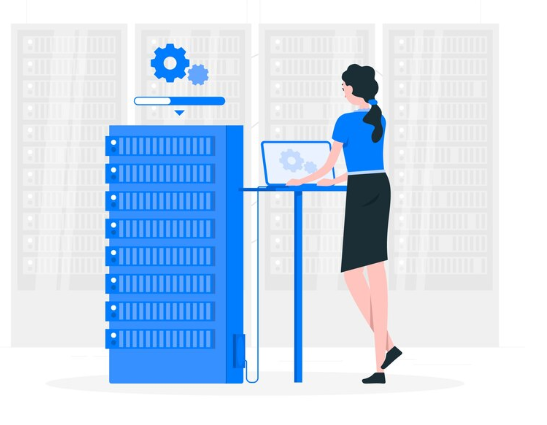
Data centers serve as the backbone of modern organizations, powering everything from cloud services to enterprise applications. But as computing demands surge, traditional storage solutions struggle to keep up. Enter SAN (Storage Area Network) storage—a scalable, high-performance answer to the data challenges facing IT departments today.
This blog explores how SAN storage can revolutionize the way data centers operate, meeting the growing demands of performance, availability, and scalability. Read on to discover why IT professionals are adopting SAN storage to future-proof their infrastructures.
What Is SAN Storage and How Does It Work?
Before we jump into its benefits, it’s important to understand what SAN storage is and how it integrates into the data center ecosystem.
The Basics of SAN
A Storage Area Network (SAN) is a specialized, high-speed network that provides block-level data access for servers. Unlike traditional direct-attached storage (DAS), which is tied to a single server, SAN is a shared system, allowing multiple servers to access data seamlessly. This architecture enhances performance, offers centralized management, and reduces data silos.
How It Works
SANs operate with a combination of storage devices (e.g., hard disks, SSDs), switches, and host bus adapters (HBAs), connected via a dedicated network. Typically using fiber channel (FC), iSCSI, or NVMe-over-Fabrics protocols, SANs ensure low-latency data delivery to enterprise applications and heavy workloads.
This setup makes SANs ideal for mission-critical applications such as databases, ERP systems, and virtual machine (VM) environments.
Why Legacy Storage Solutions Fall Short
Traditional storage systems like DAS and even some storage arrays often fail to meet the growing needs of enterprise environments. Here’s why:
- Limited Scalability
Expanding DAS or network-attached storage (NAS) systems often requires extensive hardware upgrades, leading to downtime and significant costs.
- Performance Bottlenecks
Older systems can’t keep up with the low-latency, high-throughput requirements of modern applications like AI/ML or IoT.
- Lack of Centralized Management
Managing disparate systems leads to inefficiencies, data duplication, and higher risk of human error.
If you’re facing these challenges, SAN storage might be the solution you’ve been looking for.
The Benefits of SAN Storage for Data Centers
SD-WANs, hybrid clouds, and edge computing may capture the buzz—but SAN storage is the quiet powerhouse transforming data infrastructure. Here’s a closer look at the advantages SAN offers.
1. Unrivaled Performance
SAN storage delivers exceptional speed, ensuring that even the most demanding tasks run without delays. By separating storage from the local network, SAN avoids the latency and bottlenecks that NAS systems often face.
Example Use Case: Financial institutions running large-scale databases demand ultra-low latency for real-time analytics. SAN can manage massive transactional loads with ease.
2. Easy Scalability
With SAN storage, scaling your data center becomes seamless. Systems can be expanded incrementally, avoiding the high upfront costs of over-provisioning while giving you the flexibility to grow as data needs arise.
Why It Matters: For organizations with fluctuating workloads—common in retail or media sectors—SAN supports smooth scaling without impacting performance.
3. High Availability (HA)
Downtime is not an option for mission-critical applications. SAN solutions often incorporate advanced HA features such as multipath I/O, backup recovery options, and failover mechanisms to maintain service during both planned and unplanned events.
Key Stats:
- IT downtime costs businesses an average of $5,600 per minute (source: Gartner).
- SAN’s High Availability design mitigates risks, offering up to 99.999% uptime.
4. Enhanced Data Protection
Modern SANs often integrate features like snapshots, replication, and encryption, ensuring that your data stays secure from both hardware failures and malicious attacks.
Think Ahead: If ransomware attacks corrupt local systems, SAN storage enables fast recovery with point-in-time snapshots.
5. Improved Centralized Management
Management tools provided by SAN vendors consolidate data visibility and control, which reduces admin overhead and ensures compliance with storage policies. This centralized command is especially helpful in multicloud environments.
6. Optimized for Virtualization
With the widespread adoption of virtualization (e.g., VMware, Hyper-V), SAN storage is designed to allocate resources dynamically, ensuring that virtual machines perform at their best.
Fun Fact: Modern SAN architectures fully support NVMe, unleashing even greater performance benefits for virtualized environments.
How SAN Solutions Optimize Data Center Workflows
To better visualize SAN implementation, consider an enterprise deploying VMware in a hybrid cloud setup. SAN’s centralized storage allows seamless VM migration between on-premises and cloud while maintaining consistent performance metrics.
Additionally, SAN supports policy-based automation, meaning IT teams can predefine storage rules for workloads such as backup, tiering, or disaster recovery. This automation significantly reduces manual intervention, saving time and reducing errors.
Deploying SAN Storage—Key Considerations
Thinking about adopting SAN storage for your organization? Keep the following points in mind to ensure successful deployment.
- Assess Workload Requirements
Does your environment need SAN for mission-critical tasks, or does it make sense to combine with NAS for lighter workloads?
- Evaluate Vendor Features
Leading providers like Dell EMC, NetApp, and HPE offer distinct advantages in billing models, Optane integration, and cloud-ready configurations.
- Optimize Network Infrastructure
Ensure you have the right networking backbone (fiber or high-speed Ethernet) to support SAN capabilities.
- Focus on Training and ROI
A well-trained team maximizes ROI. Ensure staff are well-versed in both SAN management and troubleshooting.
Future Trends in SAN Storage
SAN storage continues to evolve, incorporating AI/ML algorithms for predictive analytics and automated decision-making. Expect higher adoption of NVMe-over-Fabrics standards, as IT teams increasingly demand ultra-fast, scalable solutions.
According to IDC, the SAN storage market will grow at a CAGR of 4.3% through 2027, underscoring its value in a multi-cloud, data-driven future.
Upgrade Your Data Center with SAN
The right infrastructure is essential to staying competitive in today’s data-centric world. SAN storage offers the performance, scalability, and reliability needed to meet modern IT challenges head-on.
Looking to optimize your data center? Consult with our expert team now to explore how SAN solutions can benefit your operations.